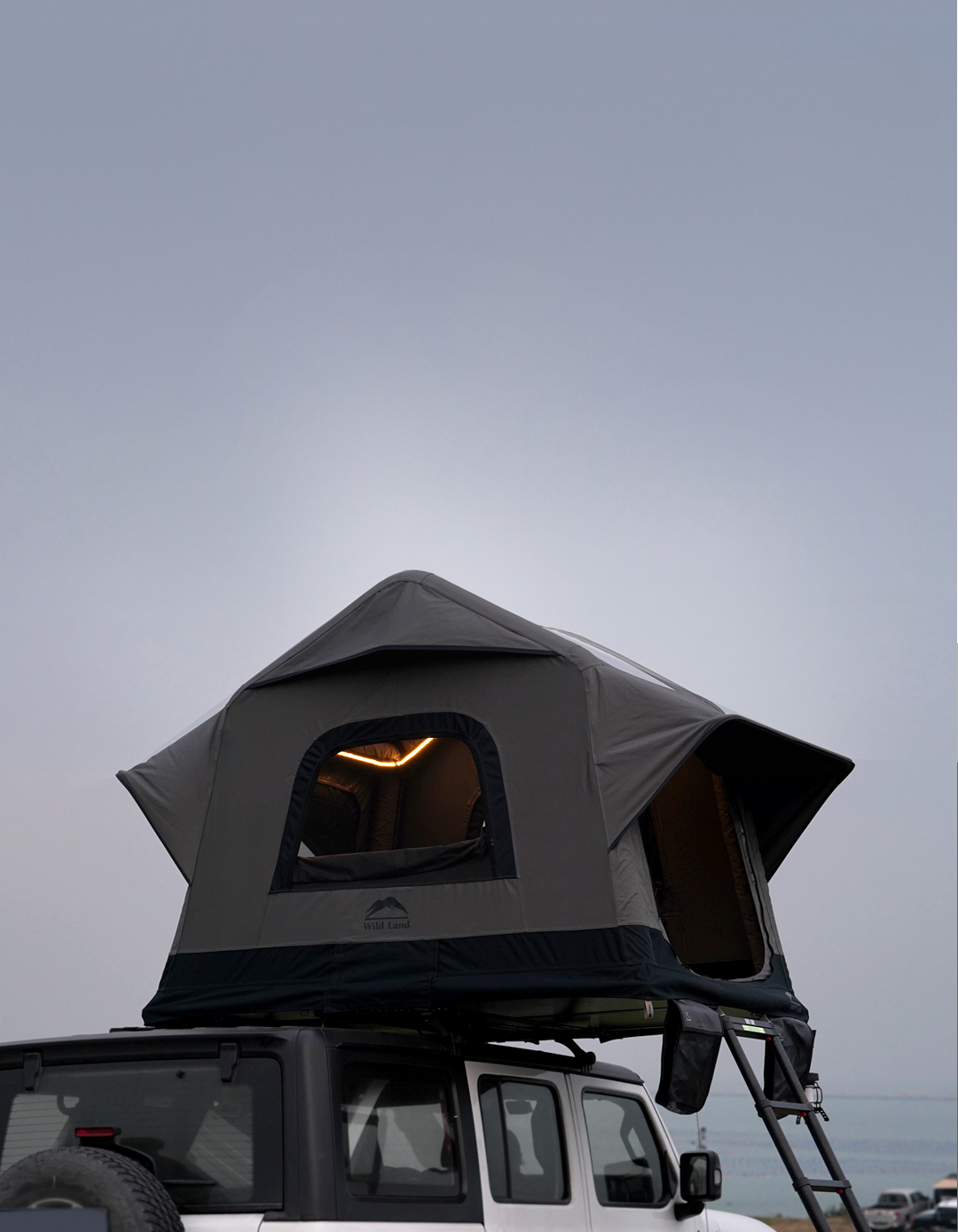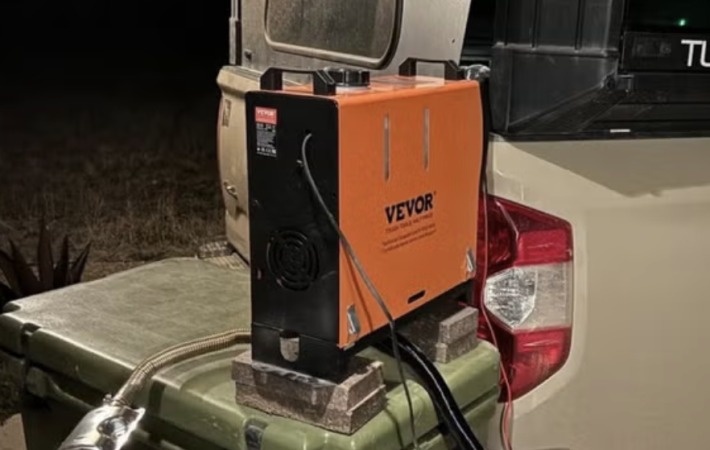Gone are the days when camping meant wrestling with tent poles and settling for a lumpy sleeping surface. The rise of rooftop tents has ushered in a new wave of comfort and convenience for adventure seekers. No longer bound to perfectly level ground, rooftop tents transform your vehicle into an off-the-grid escape pod, offering panoramic views and the ultimate in leave-no-trace camping.
Within the rooftop tent category, two main styles battle for supremacy: hard shell and soft shell tents. Hard shell tents offer streamlined shapes and quick setup, while soft shell tents boast expansive living spaces and often more features. Both offer a chance to elevate your camping experience, literally and figuratively!
Deciding between the two styles depends on your adventure needs and camping preferences. In this article, we’ll take a deep dive into the pros and cons of hard shell and soft shell rooftop tents, helping you make the ultimate choice for your next expedition into the wild.
Ease of Use: Hard Shell Simplicity vs. Soft Shell Setup
When it comes to setup and breakdown, rooftop tents are divided into two distinct camps. Hard shell tents prioritize speed with pop-up or clamshell designs that open in seconds. Unlatch a few buckles, maybe give a little shove, and you’re ready for the night. Conversely, soft shell tents involve a more hands-on process. These unpack from their travel cover and have folding frames, and often feature annexes or awnings that add to the setup time.
Choosing the winner here depends entirely on your priorities. If “set it and forget it” is your mantra, or if you find yourself arriving at camp late, a hard shell’s swift setup is undeniably tempting. Soft shell tents are better suited to longer stays in one spot, where the initial setup investment pays off with extended comfort. Consider too, conditions like rain – you don’t want to fumble with tent poles under a downpour!
Storage and Space: Compact Hard Shells vs. Expansive Soft Shells
Space matters on a vehicle, but also within the tent itself. That’s where the difference between hard shell and soft shell becomes strikingly clear.
Hard shells boast an amazingly low profile when closed. Not only does this improve aerodynamics on the road, but it may allow you to keep the tent mounted more readily (check your garage clearance!). However, their internal space while open often matches just the sleeping area footprint.
Soft shell tents, while bulkier when packed, are the masters of transformation. Once opened, they expand upwards and outwards – often providing space for gear storage, changing areas, or even additional sleeping annexes. These are mini-basecamps on top of your vehicle. The compromise? This added spaciousness translates to a larger travel footprint and may necessitate removal between longer trips.
Weatherproofing: Which Style Handles the Elements?
When your bedroom floats several feet above the ground, staying dry and sheltered becomes paramount.
Hard shell tents excel in this category. Their solid outer shells are inherently strong against wind and resist heavy rain far better than fabric counterparts. They’re built like miniature shelters to ride out storms.
Soft shell tents are built with weather-resistant fabrics, but the variability is larger. Some feature heavy-duty materials that do handle downpours well, while others are designed for fairer conditions. It’s about knowing your camping habits and choosing the material accordingly.
The Cost Factor: Budgeting for Your Rooftop Retreat
Let’s not sugarcoat it: rooftop tents are an investment. While both soft and hard shell tents exist in a range of price points, hard shell tents generally start higher and climb more steeply from there. This higher upfront cost reflects the complexity of their designs and materials. Soft shell tents start at more affordable price points, offering a greater choice for those on tighter budgets.
Still, remember to consider long-term value. With proper care, a rooftop tent is a multi-year purchase. Invest in quality now, and it may save you headaches (and the cost of a replacement) further down the road. If you’re a frequent camper, the convenience and comfort might easily outweigh the cost difference.
Additional Considerations
While we can point out general pros and cons for each tent style, the absolute “best” depends entirely on YOU. Let’s consider a few influencing factors:
- Trip Logistics: Weekend warrior or month-long expedition? Quick overnight stops favor hard shell speed; longer-term stays allow soft shell tents to shine with more ‘homey’ qualities.
- Terrain & Roads: Remote dirt tracks vs. highways have different tent demands. Think aerodynamics on the road, durability off it.
- Vehicle: Rooftop tents work on a wide array of vehicles, but your specific one may be better suited to the streamlined shape of a hard shell, or have the cargo space and load capacity to handle a more generous soft shell.
- Solo or Group Travel: Consider sleeping space and interior comfort features – soft shells cater to larger groups more easily.
In the end, it’s about aligning your personal camping habits and priorities with the features each style offers!
Conclusion
There’s no one-size-fits-all answer in the debate between hard shell and soft shell rooftop tents. Both offer an adventurous way to explore the great outdoors and create unforgettable camping memories. Hard shells deliver unmatched convenience and weather resilience, while soft shells champion expansive spaces and often greater cost-effectiveness.
The most important factor? Understanding your specific needs. Do you prioritize quick camping stops, tackle unpredictable weather, or long-term comfort? Does your journey dictate size and vehicle constraints? Answer these questions truthfully, and the rooftop tent decision becomes simpler. You’ll be out there exploring in elevated comfort before you know it!
Ready to dive deeper into the world of rooftop tent camping adventures? Visit Rooftoptents to discover more, from gear insights to inspiration for your next escape.






